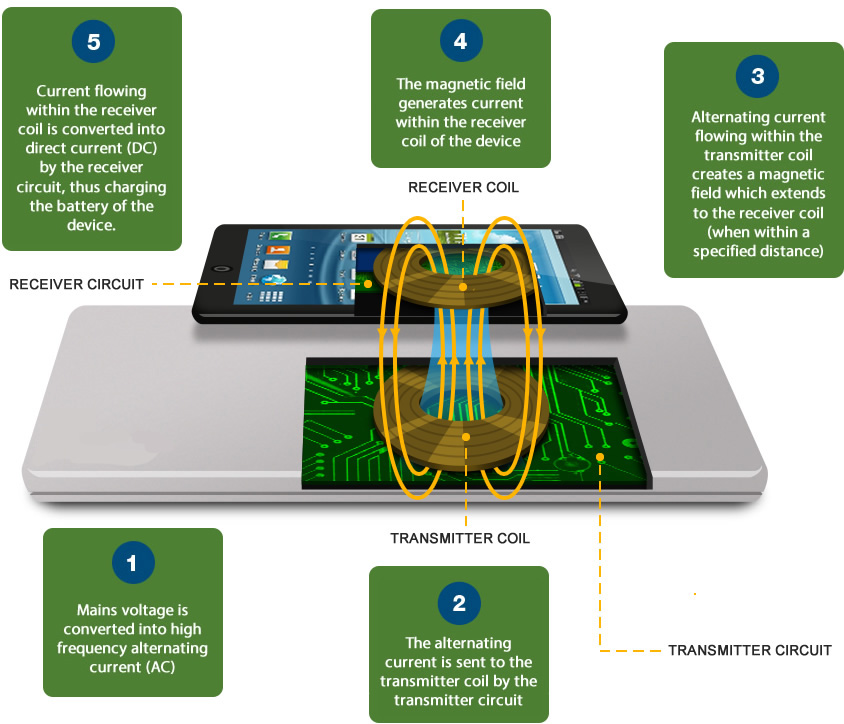Wireless Charging provides a convenient, safe, and reliable way to charge and power millions of electrical devices at home, in the workplace and in industry.
By eliminating the use of physical connectors and cables, wireless charging provides a number of efficiency, cost and safety advantages over the traditional charging cable.
From smartphones, to hand-held industrial devices and heavy-duty equipment applications, wireless power maintains safe, continuous, and reliable transfer of power to ensure all varieties of devices and equipment are charged and ready to go at a moment’s notice.
What Is Wireless Charging?
Essentially wireless charging (a.k.a wireless power transfer or charging by induction) uses electromagnetic fields to safely transfer power from a transmitting source to a receiving device for the purposes of wirelessly charging (or recharging) a battery. As the name suggests, it does so without the use of a physical connection.
How Does Wireless Charging Work?
Wireless charging is based on the principle of magnetic resonance, or Inductive Power Transfer (IPT). This is the process of transferring an electrical current between two objects through the use of coils to induce an electromagnetic field.
The diagram below simplifies the process of wireless charging and power transfer into 5 key steps.

Transcript of wireless charging steps
- Mains voltage is converted into high frequency alternating current (AC).
- The alternating current (AC) is sent to the transmitter coil by the transmitter circuit. The alternating current then induces a time varying magnetic field in the transmitter coil.
- Alternating current flowing within the transmitter coil induces a magnetic field which extends to the receiver coil (when within a specified distance).
- The magnetic field generates current within the receiver coil of the device. The process whereby energy is transmitted between the transmitter and receiver coil is also referred to as magnetic or resonant coupling and is achieved by both coils resonating at the same frequency.
- Current flowing within the receiver coil is converted into direct current (DC) by the receiver circuit, which can then be used to wirelessly charge the battery.
It’s through this process that power is safely transferred over an air gap. As well as any non-metal object that might exist between the coils. Such as wood, plastic or granite.
